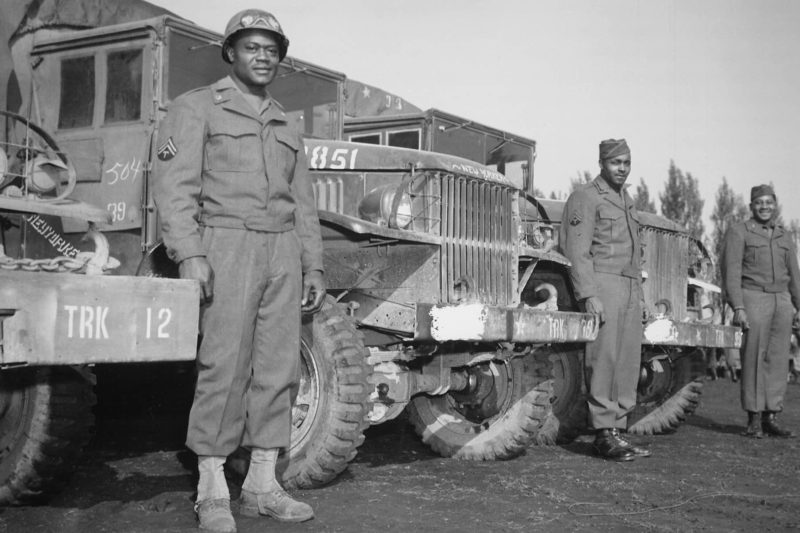Lessons on Logistics from a Forgotten Story of Black Soldiers in World War II
Share
Explore Our Galleries
Breaking News!
Today's news and culture by Black and other reporters in the Black and mainstream media.
Ways to Support ABHM?
By Matthew Delmont, Sherman Fairchild Distinguished Professor of History, Dartmouth College

General Dwight D. Eisenhower had a problem. In June 1944, Allied forces had landed on Normandy Beach in France and were moving east toward Nazi Germany at a clip of sometimes 75 miles per day.
With most of the French rail system in ruins, the Allies had to find a way to transport supplies to the advancing soldiers.
“Our spearheads … were moving swiftly,” Eisenhower later recalled. “The supply service had to catch these with loaded trucks. Every mile doubled the difficulty because the supply truck had always to make a two-way run to the beaches and back, in order to deliver another load to the marching troops.”
The solution to this logistics problem was the creation of the Red Ball Express, a massive fleet of nearly 6,000 2½-ton General Motors cargo trucks. The term Red Ball came from a railway tradition whereby railmen marked priority cars with a red dot.
From August through November 1944, 23,000 American truck drivers and cargo loaders – 70% of whom were Black – moved more than 400,000 tons of ammunition, gasoline, medical supplies and rations to battlefronts in France, Belgium and Germany.
These Red Ball Express trucks and the Black men who drove and loaded them made the U.S. Army the most mobile and mechanized force in the war. They also demonstrated what military planners have long understood – logistics shape what is possible on the fields of battle.
That is a point well known in today’s war in Ukraine: As the Russian invasion stretches into its second month, logistics have been an important factor.
Discover the importance of the Red Ball Express–then and now.
Don’t forget to visit our virtual exhibit about black soldiers in the Civil War.
More breaking news here.











Comments Are Welcome
Note: We moderate submissions in order to create a space for meaningful dialogue, a space where museum visitors – adults and youth –– can exchange informed, thoughtful, and relevant comments that add value to our exhibits.
Racial slurs, personal attacks, obscenity, profanity, and SHOUTING do not meet the above standard. Such comments are posted in the exhibit Hateful Speech. Commercial promotions, impersonations, and incoherent comments likewise fail to meet our goals, so will not be posted. Submissions longer than 120 words will be shortened.
See our full Comments Policy here.